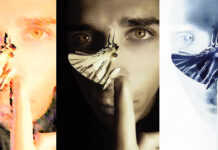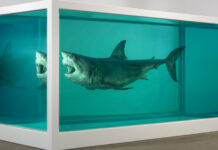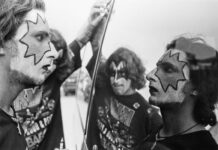First part Mothers made from wire – love in the laboratory
~~~~~~~~~~~~~~~~~~~
Before the arrival of Harlow and his Wire Mother experiments, child psychology had been behavioural. Psychologists including Skinner, who had designed a special air crib for his baby daughter, believed that you could mould a child’s character through the careful implementation of reward and punishment patterns.
Another renowned behaviourist, John Watson, wrote of child-rearing: “Do not overindulge them. Do not kiss them goodnight. Rather, give a brief bow and shake their hand before turning off the light”.
On the other hand, possibly because he had been deprived of it himself, Harlow wrote: “Hugs save! Embrace your children!”
~~
By the end of 1950s, he was still conducting the tortuous experiments of love, but he was looking for it outside his home. He had extramarital affairs and two children whom he did not trouble himself to embrace. Clara Mears, known as “Ms. IQ of 155”, abandoned him.
However, Harlow barely even noticed that his family had deserted their home. He continued to conduct love affairs with his students, although his male students loathed him, as he was utterly tyrannical.
Harlow sought to investigate the mother–infant bond and it was at this point that he conceived of the notion of the using sadistic experimental machines – known as the Evil Mothers – in his research on rhesus macaques.
~~{}~~
One of the devices shot out retractable spikes towards the babies. Another version created such a cold and forceful blast of air that the infant monkeys were thrown back against the bars of their cages, screaming.
Another version drenched the infants with cold water, as well as the Iron Maiden, which stabbed them.
~~
Harlow was curious to see what the babies would do, even though he already suspected it: the babies kept coming back.
No matter what their surrogate mother did to them, they kept returning to it in search of a little affection, to caress the towel before the mother stabbed them again.
~~{}~~
In 1958, Harlow was elected president of the American Psychological Association. His speech was entitled “The Nature of Love”.
Having become famous, Harlow was frequently on the television. After marrying another gifted child psychologist, Peggy Kuenne, he fathered two more children. Peggy gave up her equally promising career to stay at home with them.
In an interview, Harlow commented that although he had been married twice, “both my wives were too bright to be sucked into women’s lib.”
He continued to conduct extramarital affairs.
However, a few short years after his rise to prominence came the fall.
~~{}~~
It was found that the monkeys with the surrogate cloth mothers were not growing up normally. They were unable to play with other monkeys and were aggressive.
Others displayed symptoms of autism. Some kept moving aimlessly to and fro and others began injuring themselves. One chewed its entire arm.
Harlow admitted that he had been wrong: touch and hugs alone were insufficient.
Still, he didn’t give up. He continued adding new variables; he provided a cradle, a rocking surrogate mother as well as half an hour of play with real macaques. These babies grew up to be almost normal.
Harlow’s new conclusion was that touch, cradling and half an hour of play were also necessary for the animals to be able to love.
Soon enough, he realised that it is impossible to quantify love.
~
While living away from his home and family, Harlow indulged in heavy drinking. His students would spot him in the local bars and carry him back to the lab.
He was ready for the next step: the Rape Rack.
~~{}~~
It was 1966. The orphaned macaques who had grown up with Harlow’s surrogate mothers had reached reproductive age.
Harlow wanted to see what kind of mothers the subjects of his experiments would become. However, they could not mate because they wouldn’t let another animal get close to them. As a result, Harlow invented the rape rack.
The females were bound to it, immobilized so that the males could mate with – rape – them.
Twenty orphaned mothers were impregnated in this way and gave birth to babies.
Most of them killed their infants or abandoned them, displaying total indifference and even depression. Only a handful of them proved to be “adequate” mothers.
Harlow seemed to be trying to prove the obvious… and became notorious for his brutality.
~~{}~~
A few years later, his second wife died. Harlow became severely depressed and submitted to electroconvulsive therapy, rendering him the guinea pig for a while.
When he was discharged, he called his first wife, “Ms. IQ of 155”. Now widowed herself, they soon remarried.
~~
During his later years, Harlow focused on biopsychology and the remedy for depression. Possibly the figure of his mother, staring unblinkingly at him through the glass, was still haunting him.
As a result, he invented one further device: The Pit of Despair.
In this dark, isolated chamber, a macaque was bound with its head facing downwards, unable to move. Another device fed the animal, which was left there for months or even years.
When they were taken out, the animals were emotionally broken. No medicine or remedy could help them.
The same was now true of Harlow, who died of Parkinson’s disease
~~{}~~
Through his brutal experiments, Harlow managed to prove one thing: every human being (and, indeed, every animal) needs to experience love and affection in order to grow up normally and become an individual that, in turn, will be able to offer affection to somebody else.
If we expand this concept on a social level, we could perhaps propose the following supposition: a person who is reared in captivity, who experiences competition, cannibalism and bigotry, will never be able to live harmoniously with others.
~~{}~~
One final hypothesis: if Harlow had taken care of the animals, instead of torturing them, to discover the nature of love, maybe he would have been able to fill the gap his mother left in his life.
Then the animals could have redeemed him.
~~~~~~~~~~~~~~~~~~~~~~~~~~
This article was based on Lauren Slater’s book “Opening Skinner’s Box”.
~~~~~~~~









